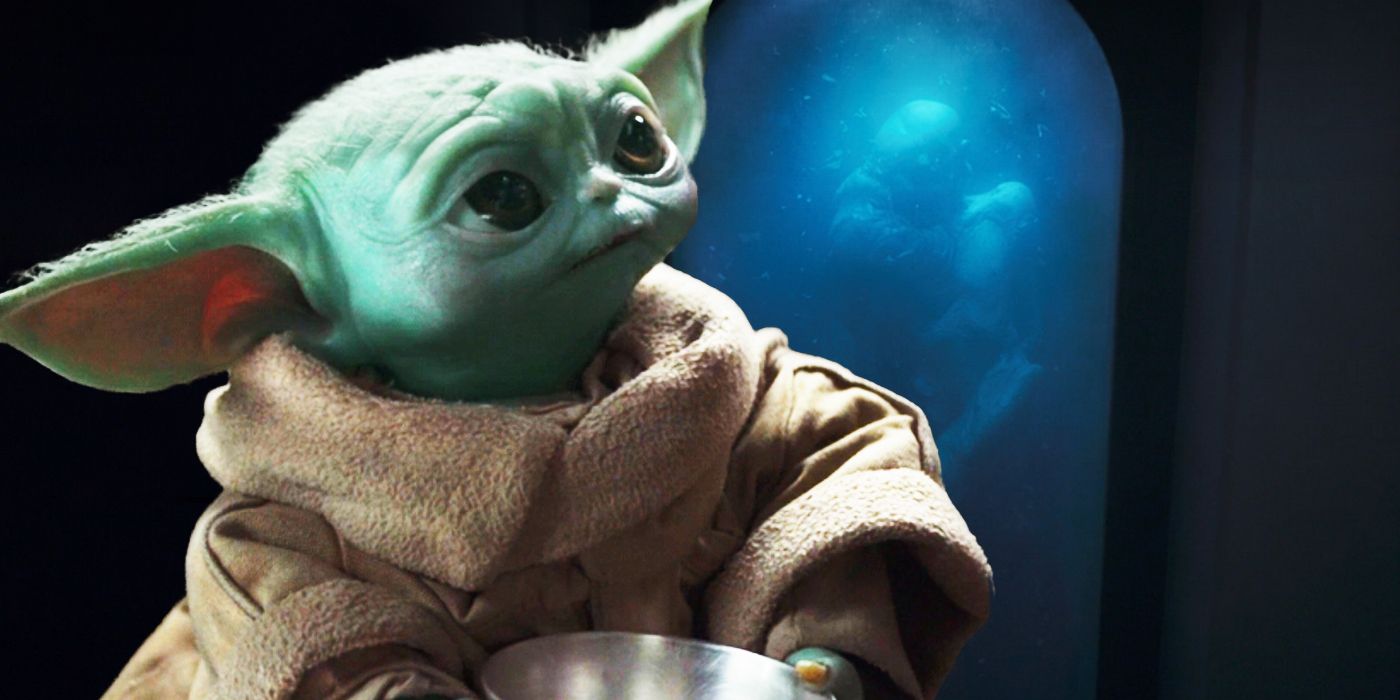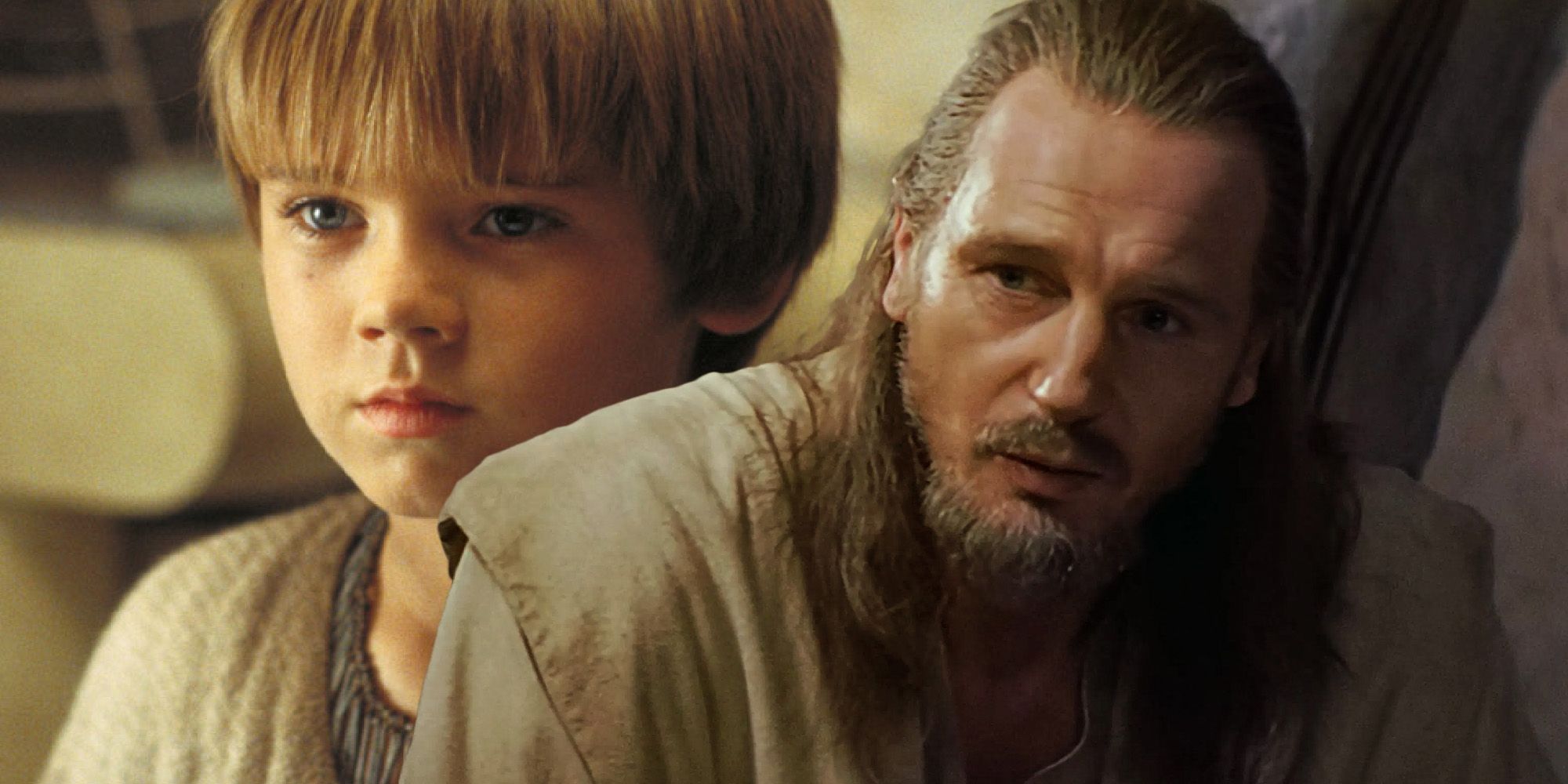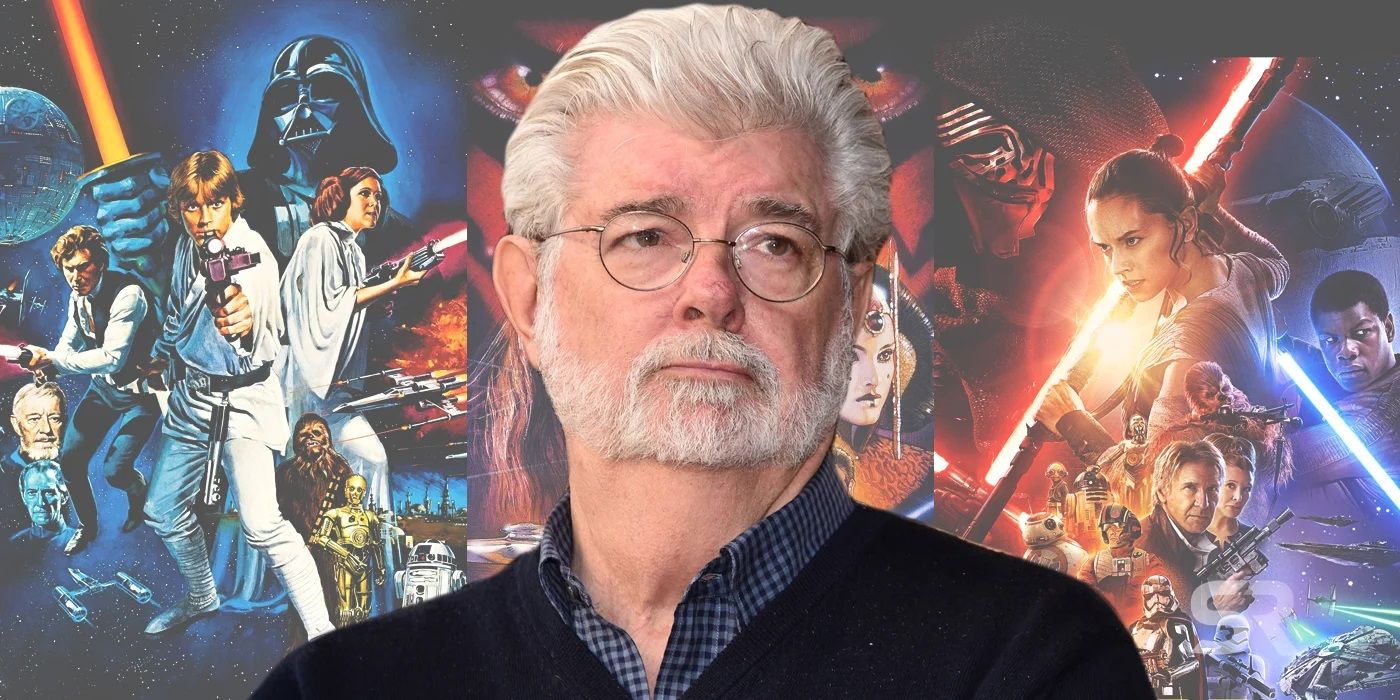
The Mandalorian's midi-chlorian reveal has gone further than George Lucas ever did. The Mandalorian season 1 introduced viewers to "The Child," a character better known in pop culture as Baby Yoda. The infant is powerful in the Force, demonstrating advanced abilities such as telekinesis and Force heal, and it is desperately sought after by Moff Gideon and the Empire.
The Mandalorian season 2 finally revealed why the Empire want Baby Yoda. Moff Gideon has commissioned experiments to attempt to transfer Force abilities via blood transfusion, a concept that's entirely new to the Disney canon, although it is arguably foreshadowed in some old Expanded Universe stories. According to a recording from Dr. Pershing, Baby Yoda is the ideal donor, because he has a remarkably high "M-count." This clearly refers to the concept of midi-chlorians, introduced into the Star Wars franchise by George Lucas himself in Star Wars: Episode I - The Phantom Menace.
George Lucas always loved the idea of midi-chlorians. Back in November 2019, JJ Abrams discussed conversations he'd had with Lucas about midi-chlorians, even though these turned out to be irrelevant to the sequel trilogy. "yes, there were some conversations about midi-chlorians," he conceded. "He loves his midi-chlorians." The Star Wars franchise as a whole has always tended to avoid exploring them in depth, however, simply because they proved too controversial. But now, it seems, this may be an idea whose time has come.

George Lucas first thought of midi-chlorians all the way back in 1977, when he set about laying the foundations for what would become an immersive transmedia franchise. Notes from the time bear a striking resemblance to the prequel trilogy, and the most intriguing section discusses what it means to be "strong" in the Force. "It is said that certain creatures are born with a higher awareness of the Force than humans," Lucas revealed in his notes. "Their brains are different; they have more midi-chlorians in their cells." Even at this stage, Lucas was clearly envisioning a biological basis to Force-sensitivity.
This idea went unused for decades, with midi-chlorians finally appearing in canon in 1999's Star Wars: Episode I - The Phantom Menace. In one key scene, Qui-Gon Jinn tested Anakin Skywalker's blood to get a sense of his Force-sensitivity. He was astounded to learn that Anakin had a midi-chlorian count higher than any Jedi, even higher than Master Yoda. "His cells have the highest concentration of midi-chlorians I have seen in a life form," Qui-Gon told the Jedi Council. Anakin himself had no idea what any of this meant, and he finally asked for clarification. Qui-Gon explained - to the viewers as well as to Anakin himself - that midi-chlorians are a microscopic life-form residing in all living cells, living as symbionts with their host bodies. "Without the midi-chlorians, life could not exist," Qui-Gon observed, "and we would have no knowledge of the Force. They continually speak to you, telling you the will of the Force." According to Qui-Gon, Anakin may well have been conceived by the midi-chlorians themselves, fulfilling the ancient prophecy of the Chosen One. This idea was picked up in Star Wars: Episode III - Revenge of the Sith, where Palpatine suggested his Sith Master had learned to manipulate the midi-chlorians to create life itself.
Midi-chlorians proved far more controversial than Lucas had expected. The core problem was that Star Wars is a science-fantasy franchise, not a science-fiction one, and consequently not everything needs to be explained. Many viewers felt midi-chlorians were essentially reductive, removing a layer of spirituality they loved by providing a pseudo-scientific explanation for the Force. Even the old Expanded Universe avoided reigniting this controversy by essentially ignoring the midi-chlorians, and the Disney era previously used Luke Skywalker himself to suggest midi-chlorians are unimportant. "Personally, I've never been one to worry about how exactly the Force whispers to me," Luke notes in the in-universe Jedi training manual Secrets of the Jedi. "All that matters to me is that it still does."

Now, The Mandalorian season 2 is going further than even George Lucas himself. Moff Gideon and the Empire are treating Force-sensitivity like a science, attempting to find a way to transplant midi-chlorians from a donor to a host. If these experiments prove a success, then Force-sensitivity will no longer be a natural event - a quirk of nature or accident of birth - but rather it will become a controlled trait implanted within specific individuals. The Empire will carefully choose which assets to grant Force-power to, likely selecting candidates according to loyalty to the Empire and prior skills. Moff Gideon may well become a test subject of this process himself, given that he dresses like a Darth Vader fanboy and wields the Darksaber. Indeed, Giancarlo Esposito has already teased Moff Gideon has a surprising connection to the Force, and that would certainly work with his becoming a Force-powered super-soldier.
One thing's for certain: the driving plot of The Mandalorian is now all about the science of the Force. This is a vision of the Force formed by scientists in laboratories, rather than by monks in monasteries. Dr. Pershing can therefore be compared to Abraham Erskine in Marvel's Captain America: The First Avenger, attempting to find ways to create super-soldiers. What's more, although The Mandalorian season 2 will introduce Rosario Dawson's Ahsoka Tano to provide a Jedi's perspective on these experiments, the main point-of-view character is still a Mandalorian who has only just begun to realize the Force is a real thing. Din Djarin's perspective, and thus that of the viewers, will predominantly be influenced by the science he has just encountered.

George Lucas had long considered making the Star Wars sequel trilogy, and he was particularly interested in exploring the science of the Force - and particularly midi-chlorians. "[My sequel films] were going to get into the microbiotic world," Lucas explained in one interview with James Cameron back in 2018. He was especially interested in a race called the Whills, who have been referenced throughout Star Wars history but have never been explained. "The Whills are the ones who actually control the universe," Lucas continued. "Back in the day, I used to say ultimately what this means is we were just cars, vehicles, for the Whills to travel around in... We're vessels for them. And the conduit is the midi-chlorians. The midi-chlorians are the ones that communicate with the Whills. The Whills, in a general sense, they are the Force." No doubt George Lucas' ideal sequel trilogy would have been even more controversial than Disney's, because the exploration of this microbiotic world would have been felt to remove a great deal of the sense of mystery and spirituality of the Force.
The Mandalorian is unlikely to explore all this; it's doubtful Lucasfilm will use this opportunity to introduce the Whills. Still, it is now the clear successor to George Lucas' pseudo-science, in that it is viewing the Force through a scientific lens. This isn't actually the first time Star Wars has hinted the Empire tried to do this; Kieron Gillen's Darth Vader comic book series revealed the Emperor sponsored attempts to duplicate Force powers using scientific means, with Darth Vader considering the idea heretical. No doubt he would have the same opinion of the Empire's super-soldier blood transfusion experiments - so, however much Moff Gideon may dress like Darth Vader, he may well be glad the Dark Lord of the Sith is long gone.
It will be fascinating to see how the fanbase react to The Mandalorian's scientific treatment of the Force. So far, all signs are that viewers are positive about it, perhaps suggesting this is an idea whose time has finally come. If so, there will be a certain degree of irony to this; Disney initially rejected treating the Force in a scientific way when they ditched Luas' own sequel trilogy plans, and now they are embracing that same approach in Disney+'s flagship Star Wars TV show.
from ScreenRant - Feed https://ift.tt/3lUF3FB


0 Comments